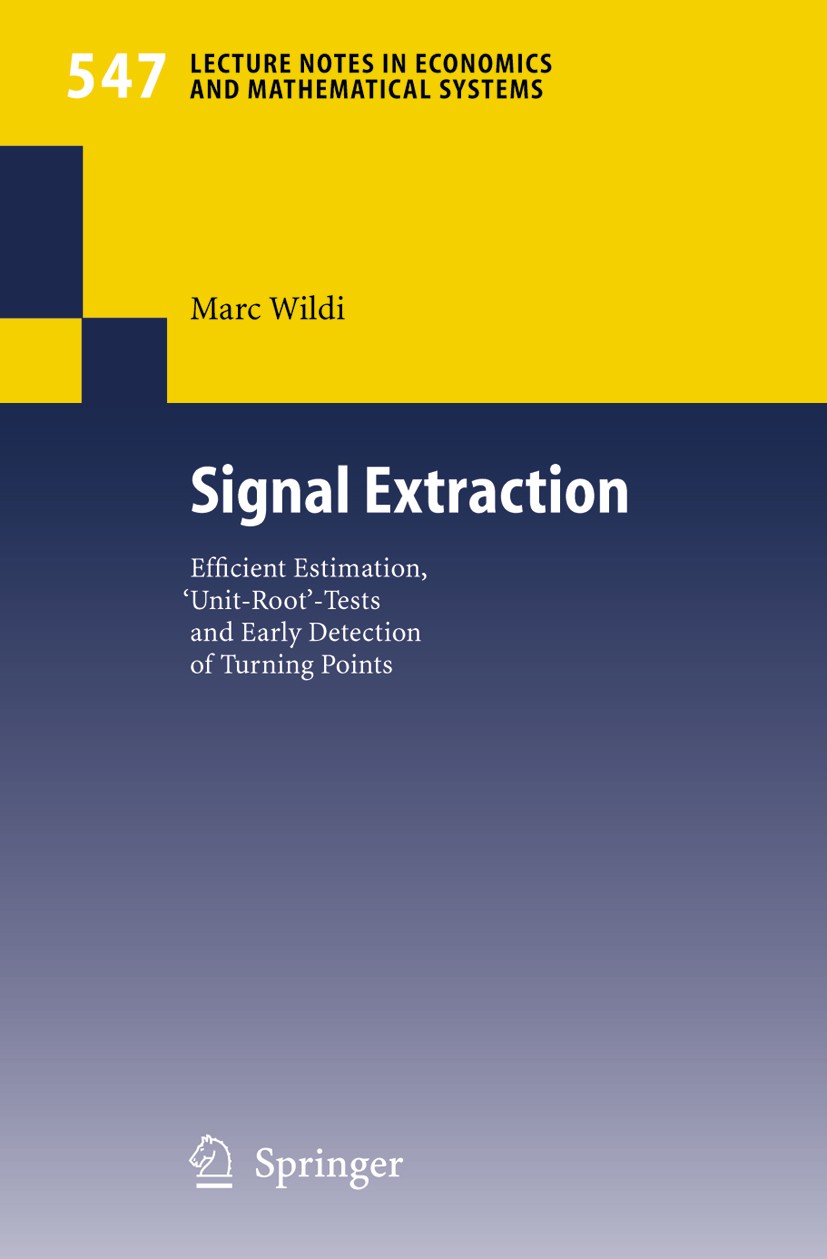| 书目名称 | Signal Extraction |
| 副标题 | Efficient Estimation |
| 编辑 | Marc Wildi |
| 视频video | http://file.papertrans.cn/868/867054/867054.mp4 |
| 丛书名称 | Lecture Notes in Economics and Mathematical Systems |
| 图书封面 |  |
| 描述 | The material contained in this book originated in interrogations about modern practice in time series analysis. • Why do we use models optimized with respect to one-step ahead foreca- ing performances for applications involving multi-step ahead forecasts? • Why do we infer ‘long-term‘ properties (unit-roots) of an unknown process from statistics essentially based on short-term one-step ahead forecasting performances of particular time series models? • Are we able to detect turning-points of trend components earlier than with traditional signal extraction procedures? The link between ‘signal extraction‘ and the first two questions above is not immediate at first sight. Signal extraction problems are often solved by su- ably designed symmetric filters. Towards the boundaries (t = 1 or t = N) of a time series a particular symmetric filter must be approximated by asymm- ric filters. The time series literature proposes an intuitively straightforward solution for solving this problem: • Stretch the observed time series by forecasts generated by a model. • Apply the symmetric filter to the extended time series. This approach is called ‘model-based‘. Obviously, the forecast-horizon grows w |
| 出版日期 | Book 2005 |
| 关键词 | Asymmetric Filters; Efficient Estimation; Forecasting; Signal Extraction; Turning Points; Unit Roots |
| 版次 | 1 |
| doi | https://doi.org/10.1007/b138291 |
| isbn_softcover | 978-3-540-22935-3 |
| isbn_ebook | 978-3-540-26916-8Series ISSN 0075-8442 Series E-ISSN 2196-9957 |
| issn_series | 0075-8442 |
| copyright | Springer-Verlag Berlin Heidelberg 2005 |
 |Archiver|手机版|小黑屋|
派博传思国际
( 京公网安备110108008328)
GMT+8, 2025-12-27 14:15
|Archiver|手机版|小黑屋|
派博传思国际
( 京公网安备110108008328)
GMT+8, 2025-12-27 14:15


